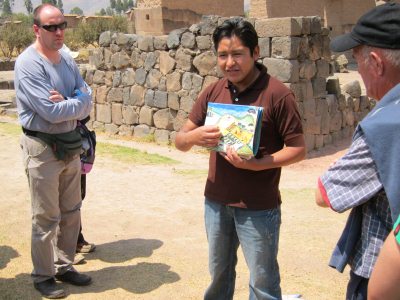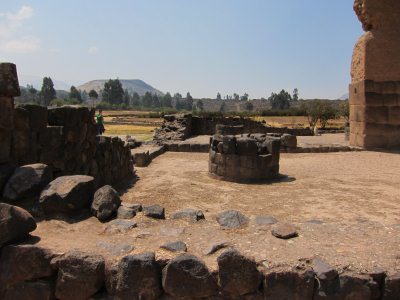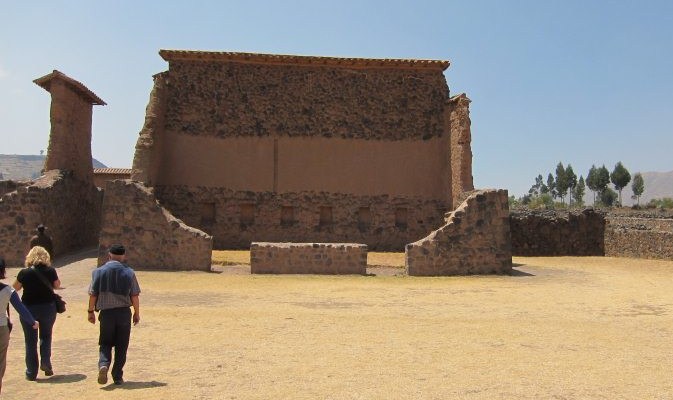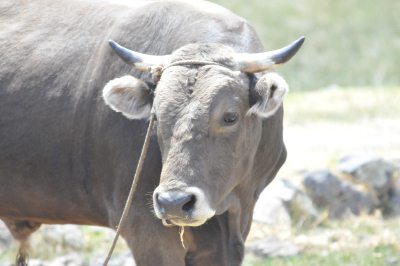Raqchi Ruins

|
The Ruins of Raqchi
Our guide Daniel explaining the layout and importance of Raqchi
Raqchi is an Inca archaeological site in the Cusco region in Peru also known as the Temple of Wiracocha, one of its constituents. A town nearby has the same name. Both lie along the Vilcanota (Urubamba) River. The site has experienced a recent increase in tourism due to the tour buses putting it in to scheduled stops, with eighty three thousand, three hundred and thirty four visitors to the site in 2006, up from eight thousand, one hundred and eighty three in 2000 and four hundred and fifty two in 1996.
Layout: The complex of Raqchi consists of several different areas each designated with a specific function.
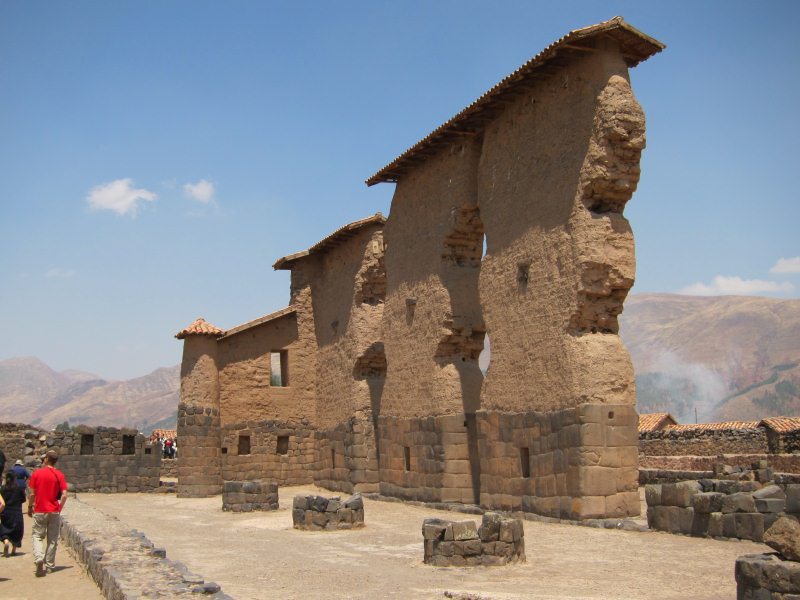 Temple of Wiracocha: The most prominent structure is the Temple of Wiracocha, an enormous rectangular two-story roofed structure that measures three hundred and two feet by eighty four feet. This structure consists of a central adobe wall some fifty five to sixty feet in height with an andesite base. Windows and doors allow passage. It is flanked on each side by a row of eleven columns. The foundations measure thirteen feet for both the wall and the columns are classic high Inca stonework with the remaining height built of adobe.
 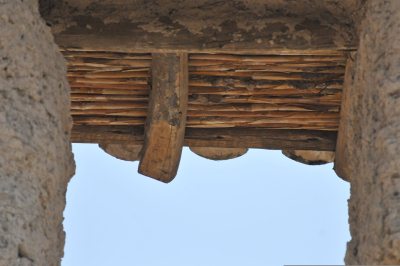 Prior to its destruction by the Spaniards, the temple had what is believed to be the largest single roof in the Incan Empire, having its peak at the central wall, then stretching over the columns and some eighty two feet beyond on each side. The huge proportions of the temple and its prominence on the site explain why the whole complex is also sometimes referred to as the Temple of Wiracocha.
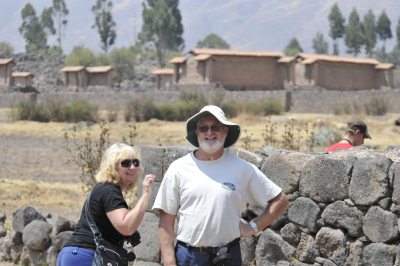  Living quarters: Adjoining the temple to the north are twelve living quarters, which would have housed both priests and local administrators. The living area is divided into separate squared lots the largest of which is roughly twelve by eighteen feet. All have niches in their walls which might have been used for storage, though some of the niches have cover posts, suggesting they may have held sacred objects.
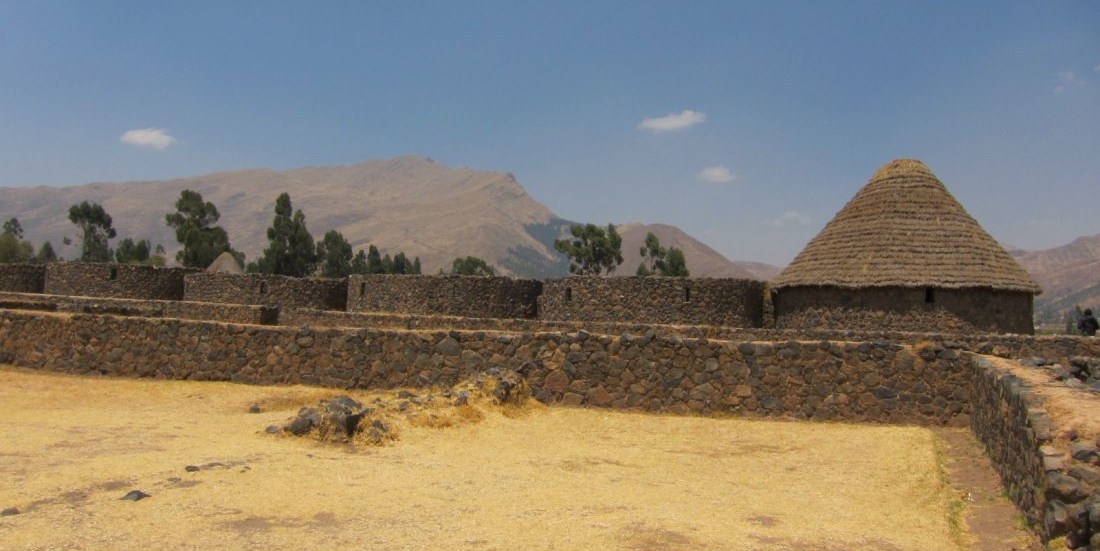 Storehouses: To the eastern side of the temple are some hundred round qolqas (storehouses) in parallel lines, each measuring some thirty three feet in diameter. These storehouses were used to hold grains, such as corn and quinoa that would have been used for ceremonial purposes. The storehouses are also unique as unlike other structures throughout the empire they are not square cornered. The reason for this is unknown. The inhabitants used spices and herbs to keep the storehouses fresh and free from vermine.
 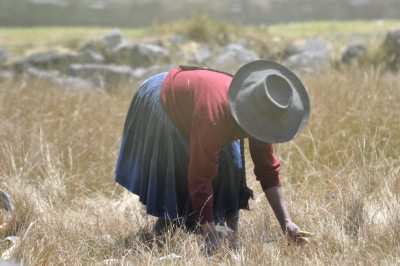
Fairground and baths: To the west of the temple is a large field, now used by locals for farming, that might have been a fairground or to hold overflow of worshipers from the temple itself. On the far western edge of this field is a set of baths similar to ceremonial baths at important sites throughout the empire. Considering these ruins are open to the elements they remain in excellent condition.
ALL IN ALL A SURPRISE VISIT TO AN INTERESTING
SITE |
